- Scientific name: Euphyes dion
- Species of Greatest Conservation Need (MA State Wildlife Action Plan)
- Threatened (MA Endangered Species Act)
Description
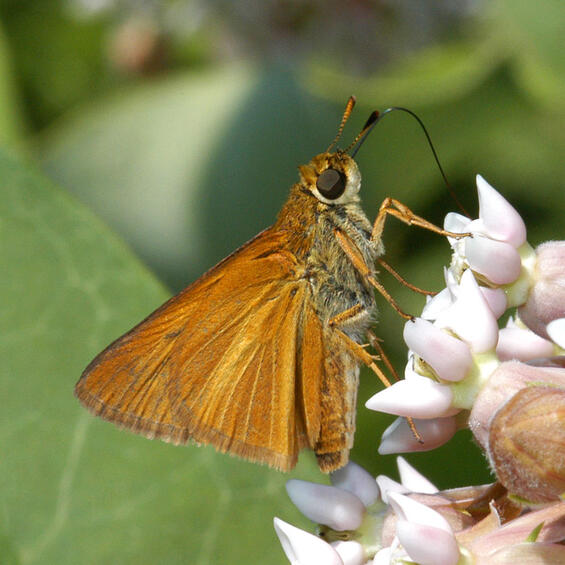
Dion skipper (Euphyes dion), underside
The Dion skipper (Euphyes dion) is a butterfly with a wingspan of 32-41 mm (1.3-1.6 in) (Pyle 1981). It is distinguished from other skipper butterflies in the genus Euphyes by the presence of two yellow, radial rays on the ventral side of the hind wing, extending from the basal area to the wing margin. The ventral side of both the forewing and hind wing are otherwise a uniform, bright orange. In the male, the dorsal side of the forewing is orange with a prominent black dash and a wide black band along the outer wing margin; the dorsal side of the hind wing has an orange center and a wide black margin. In the female, the dorsal side of the forewing is mostly black with yellowish-orange spots; the dorsal side of the hind wing has an orange center as in the male, but with a wider black margin.
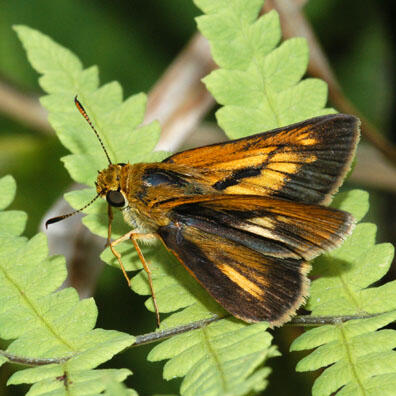
Upper side (male)
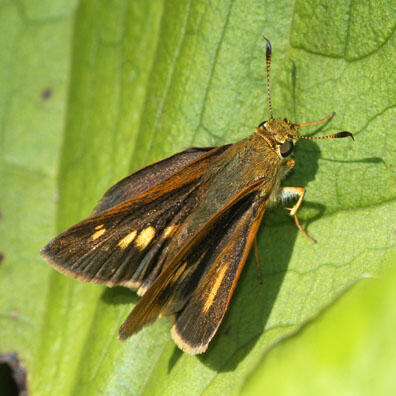
Upper side (female)
Life cycle and behavior
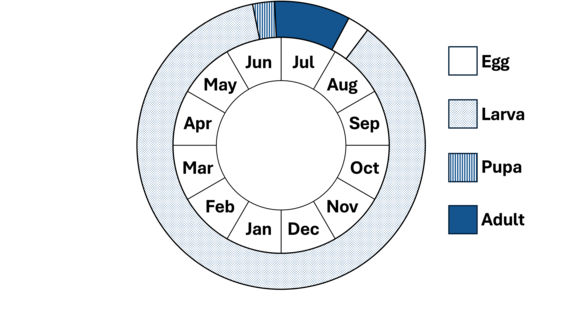
In Massachusetts, Dion skipper butterflies fly from late June through late July. Adults nectar at flowers in the wetland habitat, such as northern blue flag iris (Iris versicolor) and swamp milkweed (Asclepias incarnata). Nearby fields are visited to nectar at common milkweed (A. syriaca) and a variety of other flowers. Larvae feed on sedges (Carex) in the wetland. There is one brood per year in Massachusetts, with larvae overwintering and pupating in June.
Distribution and abundance
Massachusetts is at the northeastern edge of the Dion skipper’s range, which extends south to northern Florida and west to eastern North Dakota and eastern Texas (Opler 1998). In Massachusetts, this species occurs primarily in the western part of the state. Records in Worcester and Middlesex Counties represent newly colonized habitats and may be part of a more widespread northward expansion of the range of this species.
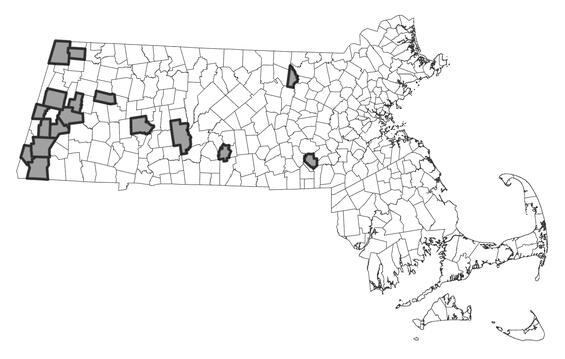
Distribution in Massachusetts.
1999-2024
Based on records in the Natural Heritage Database.
Habitat
In Massachusetts, the Dion skipper inhabits sedge wetlands, including fens, marshes, wet meadows, and shrub swamps. Adult butterflies nectar both within the wetland and in nearby habitat with flowers (for example, infrequently mowed fields).
Healthy habitats are vital for supporting native wildlife and plants. Explore habitats and learn about conservation and restoration in Massachusetts.
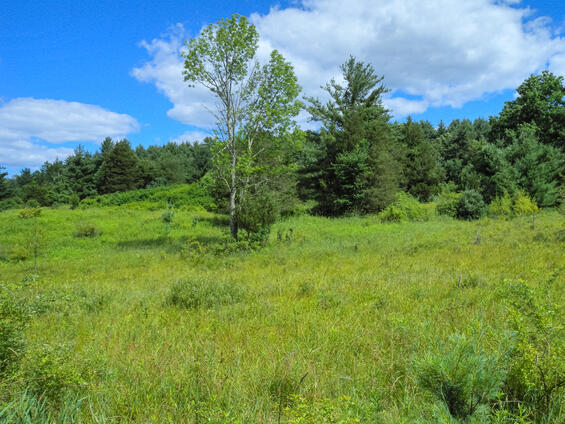
Calcareous sloping fen (a type of sedge wetland), habitat for the Dion skipper.
Threats
The Dion skipper is threatened by habitat loss and hydrologic alteration that disrupts its wetland habitats. Other potential threats include invasion by exotic plants, eutrophication or other water pollution, introduced generalist parasitoids, aerial insecticide spraying, non-target herbicide application, and off-road vehicles. Climate change may not be detrimental to this species in Massachusetts; its range extends south to Florida, suggesting adaptation to warm temperatures. Recent colonization of habitats at the northern edge of its range may be a result of a warming climate.
Conservation
Land protection and habitat management are the primary conservation needs of the Dion skipper in Massachusetts. In particular, sedge wetlands including fens, marshes, wet meadows, and shrub swamps should be conserved, restored, and managed to maintain habitat for this species and other species dependent on such habitats.
Survey and monitoring
The distribution of the Dion skipper in Massachusetts is well documented. As this species appears to be spreading north and east within the state, appropriate habitats should be surveyed to better document this trend. Known populations should be surveyed to document persistence at least once every 25 years; every 10 years is more desirable when practicable.
Management
Management of sedge wetlands benefits a suite of rare and threatened species. Restoration and maintenance of natural hydrology and control of invasive exotic plants are of primary importance. Habitat condition should be monitored and management adapted as needed.
Research needs
The natural history and conservation needs of the Dion skipper are relatively well known. However, the specific species of sedges (Carex spp.) used as larval host plants in Massachusetts are not known and should be documented. The range of this species appears to be spreading north and the number of colonies increasing in the state; however, other effects of climate change may not be beneficial and warrant further study.
References
Opler, P.A. 1998. A Field Guide to Eastern Butterflies. Peterson Field Guide Series. Houghton Mifflin, Boston, Massachusetts. 486 pp.
Pyle, R.M. 1981. National Audubon Society Field Guide to North American Butterflies. Chanticleer Press, New York, New York. 924 pp.
Contact
| Date published: | March 21, 2025 |
|---|